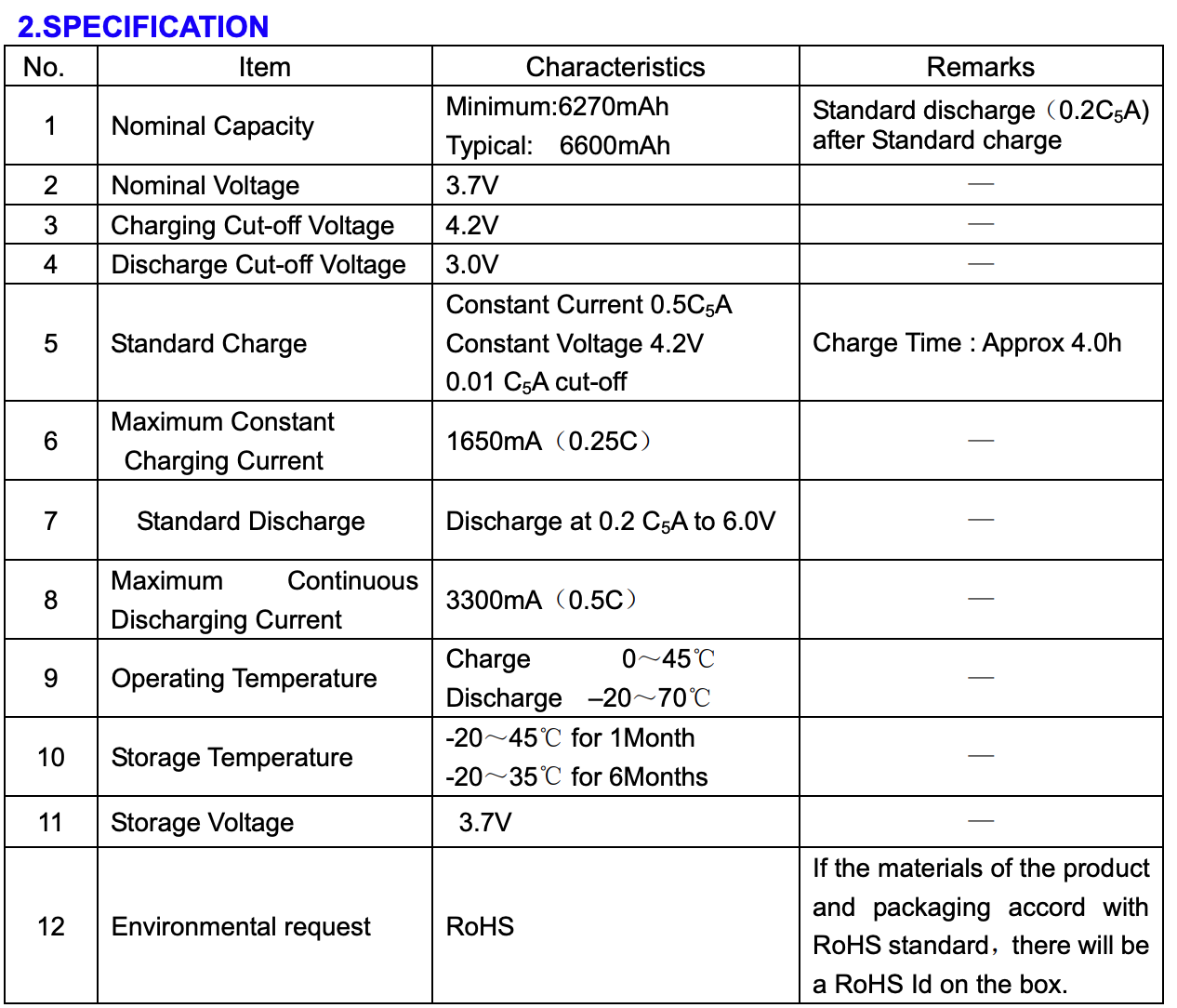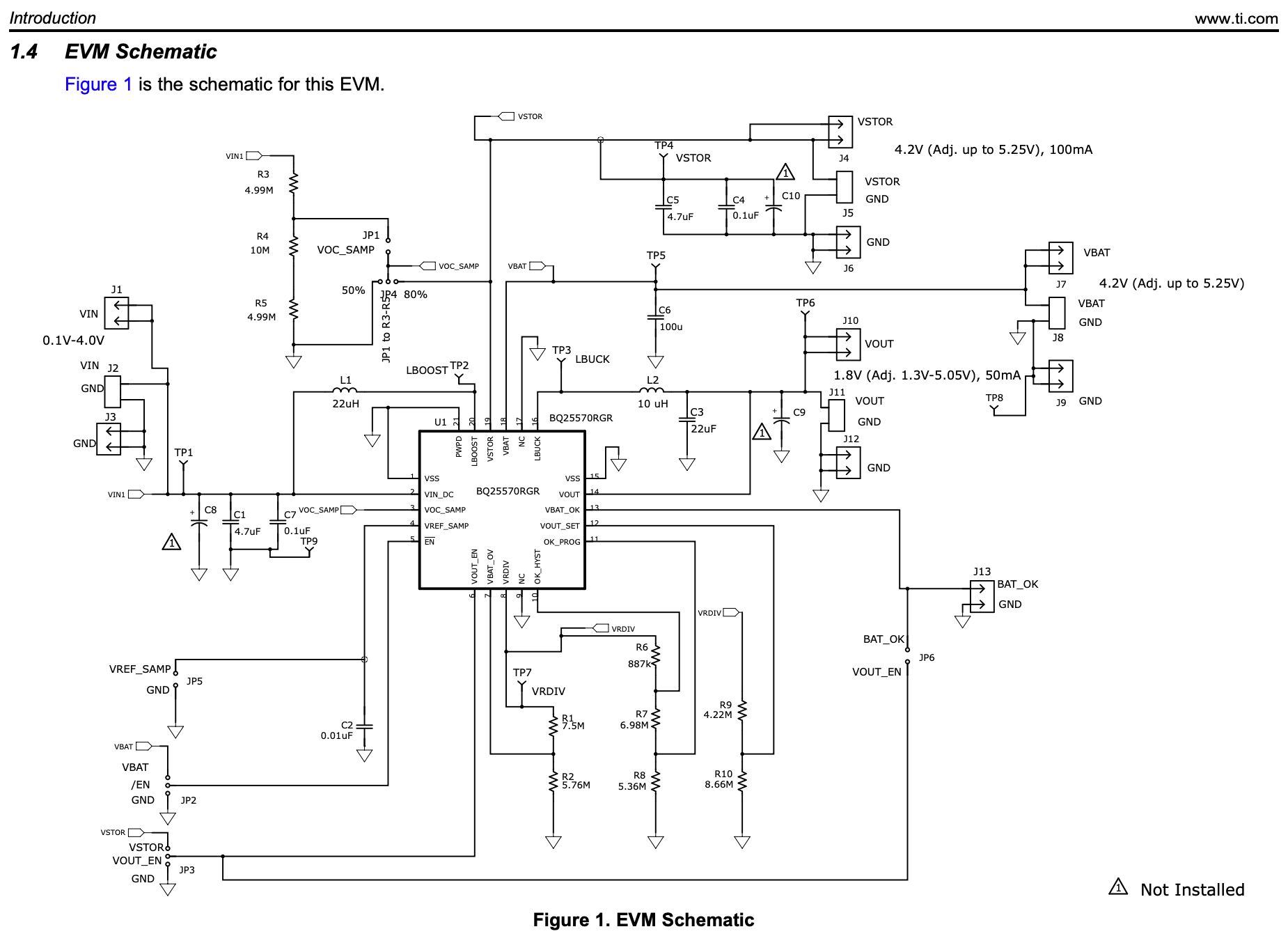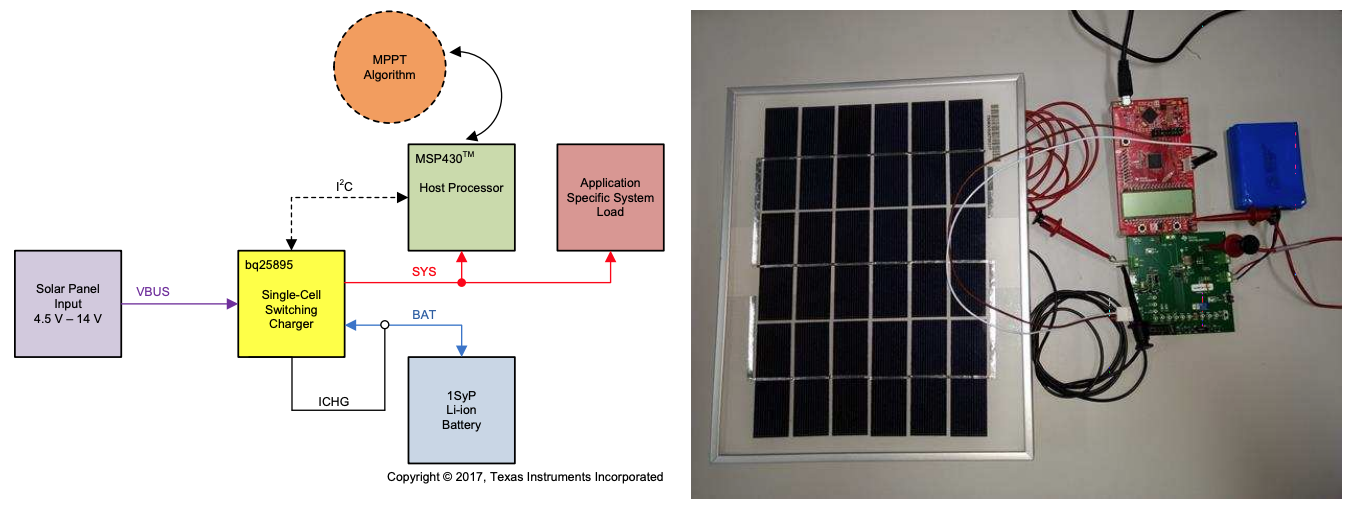Other Parts Discussed in Thread: CC3220SF-LAUNCHXL, , BQ25570, CC3220SF, BQ25895, TIDA-01556
Hi, I have purchased BQ25570EVM-206, CC3220SF-LAUNCHXL, OPT3001DNPT, and HDC2080DMBT from Digikey.
My team is trying to create an outdoor Wi-Fi ambient tracking application.
This is the battery, which I bought from Adafruit, I'm trying to charge; Lithium Ion Battery Pack - 3.7V 6600mAh (PRODUCT ID: 353)
SHENZHEN PKCELL BATTERY CO, Model:ICR18650 6600mAh 3.7V 1S3P
https://www.adafruit.com/product/353
This is the detailed specification
I wish to charge this with a solar cell. I'm trying to create a prototype.
Q0. Is the EVM has a fixed voltage output of 1.8V due to R9 and R10 (or ROut1 and ROut2)?
If so, what part should I change to get 3.3V output, also supporting peak output current up to 110 mA? I'm creating a demo that draws 90mA from the 3.3V output.
If this IC cannot support this current, I hope to get an alternative solar charger + buck converter which supports higher output current.
Q1. For this battery, what solar should I connect at VIN (J1 & J2)? I'm new with the solar cell so I need your advice, please.
This prototype will be installed on a highway located in Tyler Texas, so we are trying to do solar charging during the day time.
https://www.turbinegenerator.org/solar/texas/tyler/
In Tyler TX, fixed Tilt Sunlight Hours: 4.9 hours per day
It would be best if the recommended solar cell (or cells) can reach the max Charge current, which is 0.1A.
If not, I wish to achieve 25mA as a minimum charging current.
Q2. Since I'm using the CC3220SF-LAUNCHXL, I thought 3.3V supply was necessary to use all the Wi-Fi features.
If I can use all Wi-Fi features with 1.8V supply, will connecting every ICs (BQ25570, CC3220SF, OPT3001DNPT, and HDC2080DMBT) extend the battery life compared to using 3.3V supply?
Q3. Does the BQ25570 have a feature that shows the remaining battery?
Or do I have to use a voltage divider or an IC from TI to get this?
Q4. Lastly, if I connect an external power supply instead of a battery at VBAT pin
(when the battery is not ready/want to test the system quickly),
will the power supply get affected when BQ25570 tries to charge it? I'm currently using RIGOL DP831
https://www.sicamax.ch/downloads/dp800_userguide_en.pdf
and I want to make sure I don't want to damage the external power supply.
Is there a VOUT disable/charge disable pin for BQ25570?







